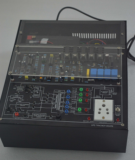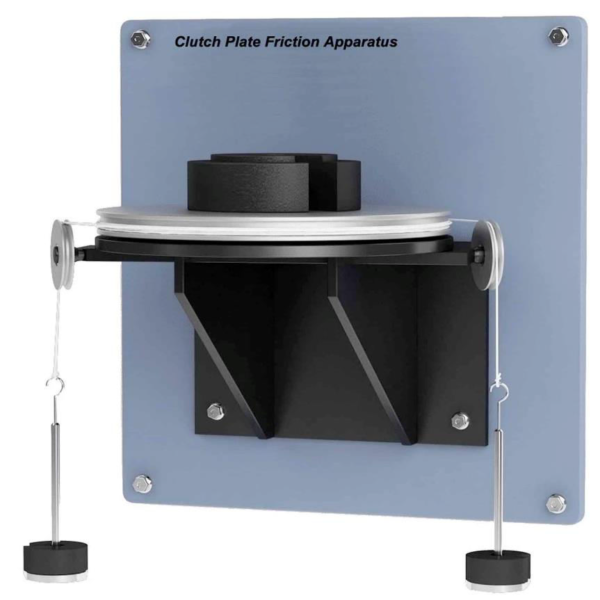Clutch Plate Friction Apparatus Model MT 020
Home » Products » Clutch Plate Friction Apparatus Model MT 020
Clutch Plate Friction Apparatus Model MT 020
Sci-tech Clutch Plate Friction Apparatus Model MT 020 includes Clutch plates are used to connect and disconnect driven part from the driving part temporarily. This apparatus demonstrates the concept of clutch friction using different types of clutch plates. It consists of flat disc of leather against which a clutch plate is loaded. The clutch plate is secured by screws to the effort pulley. A torque is applied to the effort pulley by dead weight using two load cords. The main load on the effort pulley and thus the clutch plate is applied by a loading arm system via a thrust bearing.
The wall mounted apparatus comprises a lower stationary plate attached to a sturdy wall mounting bracket. On top of this stationary disc sits an upper aluminium alloy plate whose shaft rotates in ball bearings but which is in direct contact with the stationary plate.
Sandwiched between the lower and upper plate are three friction discs, each of different diameters. Each disc is positively located on pins to ensure they remain stationary. The minimum force on the friction disc is the self-weight of the upper plate, but the contact pressure can be increased by adding weights to the upper plate.
Pure torque is applied to the upper plate through two loaded cords and pulleys. The cords wrap around a groove in the upper plate.
| Size: | 40cm x 40cm x 70cm (LxWxH) |
| Weight: | 15 kg |
Item Description
Features
- Wall mounted apparatus
- Three Friction discs supplied
- Each friction disc with different diameter
- Discs tested individually or ALL together
- Contact pressure applied vertically.
- Pure torque applied using weights.
- Bench top mounting frame available.
Sci-tech Clutch Plate Friction Apparatus Model MT 020 includes Clutch plates are used to connect and disconnect driven part from the driving part temporarily. This apparatus demonstrates the concept of clutch friction using different types of clutch plates. It consists of flat disc of leather against which a clutch plate is loaded. The clutch plate is secured by screws to the effort pulley. A torque is applied to the effort pulley by dead weight using two load cords. The main load on the effort pulley and thus the clutch plate is applied by a loading arm system via a thrust bearing.
The wall mounted apparatus comprises a lower stationary plate attached to a sturdy wall mounting bracket. On top of this stationary disc sits an upper aluminium alloy plate whose shaft rotates in ball bearings but which is in direct contact with the stationary plate.
Sandwiched between the lower and upper plate are three friction discs, each of different diameters. Each disc is positively located on pins to ensure they remain stationary. The minimum force on the friction disc is the self-weight of the upper plate, but the contact pressure can be increased by adding weights to the upper plate.
Pure torque is applied to the upper plate through two loaded cords and pulleys. The cords wrap around a groove in the upper plate.
A set of calibrated weights is supplied which enable the loading force to be varied and applied torque to be adjusted also
See also different:

Sci-tech Supersonic Wind Tunnel Model AT 012 is a test bed for examining the fluid mechanics and associated fluid phenomena for air travelling faster than the speed of sound. The supersonic wind tunnel is open type wind tunnel working continuo [...]

Sci-tech UPS Trainer Model ETR 052 is a very versatile UPS training system, has been designed to explain a switching based Uninterrupted Power Supply. The product is designed keeping in mind that a student can understand each block of UPS-01 i [...]

The replacement of a faulty compressor or other components of the refrigeration system are amongst the repeated activities of a mechatronics engineer for refrigeration. Sci-tech Refrigeration Repair/Replacement Component Model RAC 080 allows f [...]

